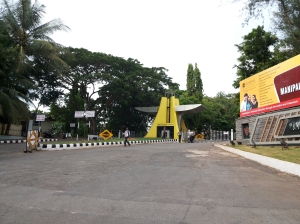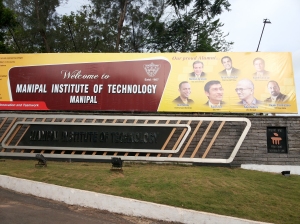Akin to Darwin’s theory of ‘Survival of the Fittest’, admission into the premier public institutes in India is about 'Survival of the Brightest'. With the scores in board examinations soaring as high as the mercury levels in most parts of the country, both students and their parents feel the heat as competition for admissions into colleges gets tougher.
A score less than 90% is unlikely to fetch a student, a seat in the general category, in a premier public institute. Even so, a score above 90% alone does not suffice for entrance in most of the leading public engineering institutes, where selection is determined by the combined board score and score in the Joint Entrance Examination (JEE).
The tough selection criteria coupled with growing number of applicants each year (over 1.3 million students registered for JEE in 2014) leaves many meritorious students missing the mark to secure a place in the publicly funded institutes. Into this void of demand and supply, have stepped in some private engineering institutes that aim at providing quality education to the students.
Traditionally higher education in India has been the forte of government owned institutions and people have generally been skeptical about the quality of education imparted by the private universities. However the perception seems to be changing. The change somewhat accelerated in this year 2014 itself, after it became common knowledge that the CEOs of two of the world’s most famous technology brands, have graduated from a relatively modest private engineering institute in India.
Manipal Institute of Technology (India’s MIT) came into limelight this year as the alma mater of both Satya Nadella, the CEO of Microsoft and Rajeev Suri, the CEO of Nokia.
A visit to the MIT campus last week when I accompanied my daughter for the counseling session for B Tech admission put any remaining doubts to rest.
Located near Udupi in Karnataka, MIT is at a distance of about 60 kms from the Mangalore airport. On the way from the airport to Manipal, the scenic rolling topography, greenery and serenity of the place soothe the eyes and mind.
A large poster at the entrance of the campus with images of the illustrious alumni catches our attention. The MIT campus is a part of Manipal University which is a unique university town by itself. Education drives the economy of the place. The small town with a population of around 35,000 is home to nearly 28,000 students pursuing courses in various disciplines including medicine, engineering, management and humanities.


Founded in 1957 by Dr TMA Pai, MIT is one of the first self-financing engineering colleges in the country. The campus is spacious, clean, green and self sufficient with Engineering blocks, laboratories, innovation centers, library, separate hostels for girls and boys, a spacious food court, cafeteria, bookshops and small shops for other necessities. Infrastructure is excellent; the campus is Wi-Fi enabled and air-conditioned lecture halls are equipped with hanging projectors. About half a km away from the campus is Marena, a large the indoor sports arena that provides world class sports facility to the students and staff of Manipal University.
Counseling sessions are transparent and well organized. Real time status update on allotment of seats show on big screens in the lecture halls where the counseling sessions are conducted. The status is made available on the college website at the end of each session. No one seems to be in a rush and yet everything gets done efficiently and on time.
Dr Murthy, a senior professor at MIT is kind enough to guide us around the campus. We meet Director Dr Vinod Thomas and Joint Director Dr Srikanth, who come across as warm and very down to earth people. The professors, head of departments have mostly graduated from the IITs or NITs. They appear genuinely interested in getting to know the new students as well as their parents. I find it reassuring to know that children of many of the professors are studying in the institute; it speaks volumes about the amount of confidence they have in their institute. The placement statistics too are good with close to 80% students getting placed in companies recruiting from the campus. Above all, the place seems safe for girls, which addresses a big concern for most parents.
Hopefully the coming years will see more such smart universities emerging in the private sector to cater to the growing demand for higher education in India. Engineering and management institutes such as Nirma University of Science and Technology, Vellore Institute of Technology, Dhirubhai Ambani Institute of Information and Communication Technology, ISB and Symbiosis are already making their mark.
 .
. .
.
